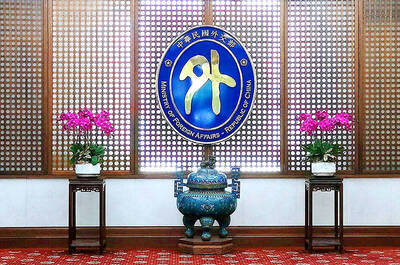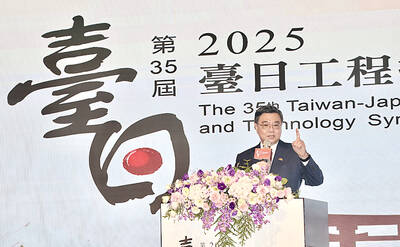A parliamentary delegation from Japan’s Liberal Democratic Party (LDP) is scheduled to arrive in Taiwan tomorrow and meet with President Tsai Ing-wen (蔡英文) and other top officials during a four-day visit, the Ministry of Foreign Affairs said on Friday.
The delegation, led by Japanese lawmaker Hiroshige Seko, secretary-general of the LDP in the House of Councillors in the Japanese Diet, is to meet with Tsai, Vice President William Lai (賴清德), Premier Su Tseng-chang (蘇貞昌) and Legislative Speaker You Si-kun (游錫?) to discuss bilateral relations, the ministry said in a statement.
In addition to Seko, the delegation consists of 11 lawmakers who were part of the LDP faction led by former Japanese prime minister Shinzo Abe, who was assassinated in early July while campaigning in Nara, Japan, the statement said.
The members would pay their respects to former president Lee Teng-hui (李登輝) at a military cemetery in New Taipei City and visit a memorial to Abe in Kaohsiung before departing on Thursday next week, the ministry said.
Both of the former national leaders are regarded by some to have made significant contributions to promoting Taiwan-Japan ties.
The visit would be a testament to the close friendship between Taiwan and Japan, it said.
Taiwan and Japan enjoy “close economic and people-to- people ties,” the statement said, adding that Taipei looks forward to further bilateral cooperation that stems from the visit.

The Ministry of Foreign Affairs (MOFA) yesterday voiced dissatisfaction with the Comprehensive and Progressive Agreement for Trans- Pacific Partnership (CPTPP), whose latest meeting, concluded earlier the same day, appeared not to address the country’s application. In a statement, MOFA said the CPTPP commission had "once again failed to fairly process Taiwan’s application," attributing the inaction to the bloc’s "succumbing to political pressure," without elaborating. Taiwan submitted its CPTPP application under the name "Separate Customs Territory of Taiwan, Penghu, Kinmen and Matsu" on Sept. 22, 2021 -- less than a week after China

ALIGNED THINKING: Taiwan and Japan have a mutual interest in trade, culture and engineering, and can work together for stability, Cho Jung-tai said Taiwan and Japan are two like-minded countries willing to work together to form a “safety barrier” in the Indo-Pacific region, Premier Cho Jung-tai (卓榮泰) yesterday said at the opening ceremony of the 35th Taiwan-Japan Modern Engineering and Technology Symposium in Taipei. Taiwan and Japan are close geographically and closer emotionally, he added. Citing the overflowing of a barrier lake in the Mataian River (馬太鞍溪) in September, Cho said the submersible water level sensors given by Japan during the disaster helped Taiwan monitor the lake’s water levels more accurately. Japan also provided a lot of vaccines early in the outbreak of the COVID-19 pandemic,

A home-style restaurant opened by a Taiwanese woman in Quezon City in Metro Manila has been featured in the first-ever Michelin Guide honoring exceptional restaurants in the Philippines. The restaurant, Fong Wei Wu (豐味屋), was one of 74 eateries to receive a “Michelin Selected” honor in the guide, while one restaurant received two Michelin stars, eight received one star and 25 were awarded a “Bib Gourmand.” The guide, which was limited to restaurants in Metro Manila and Cebu, was published on Oct. 30. In an interview, Feng Wei Wu’s owner and chef, Linda, said that as a restaurateur in her 60s, receiving an

Kaohsiung Mayor Chen Chi-mai (陳其邁) on Monday announced light shows and themed traffic lights to welcome fans of South Korean pop group Twice to the port city. The group is to play Kaohsiung on Saturday as part of its “This Is For” world tour. It would be the group’s first performance in Taiwan since its debut 10 years ago. The all-female group consists of five South Koreans, three Japanese and Tainan’s Chou Tzu-yu (周子瑜), the first Taiwan-born and raised member of a South Korean girl group. To promote the group’s arrival, the city has been holding a series of events, including a pop-up